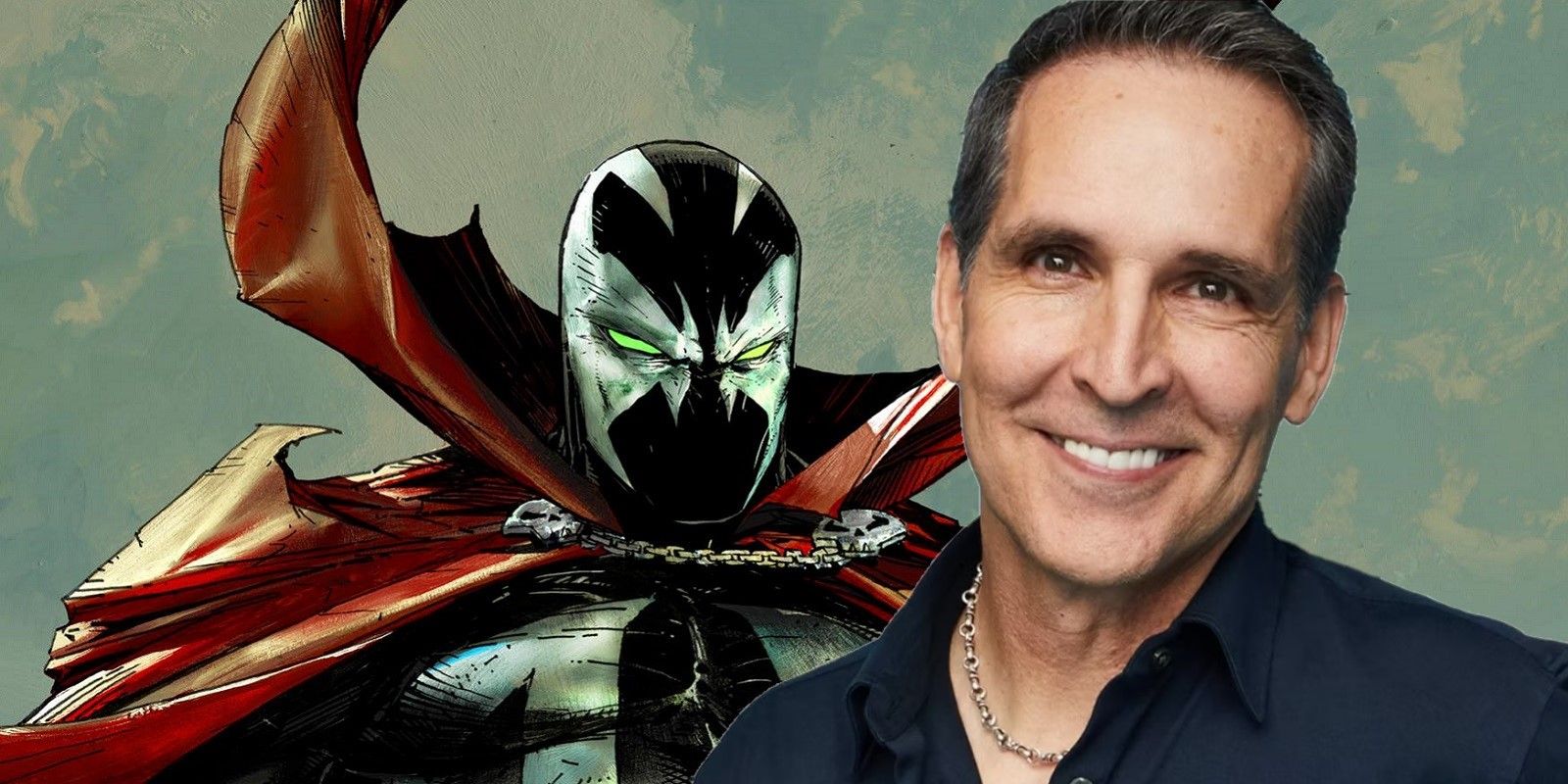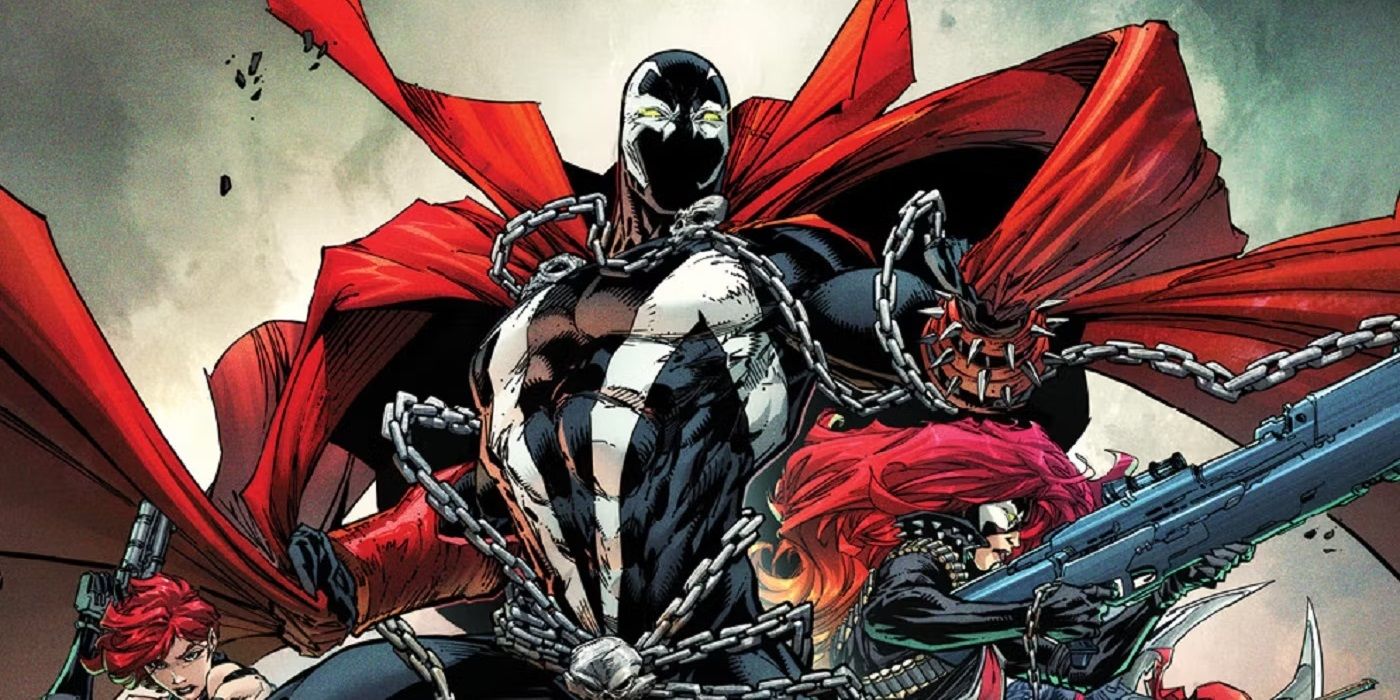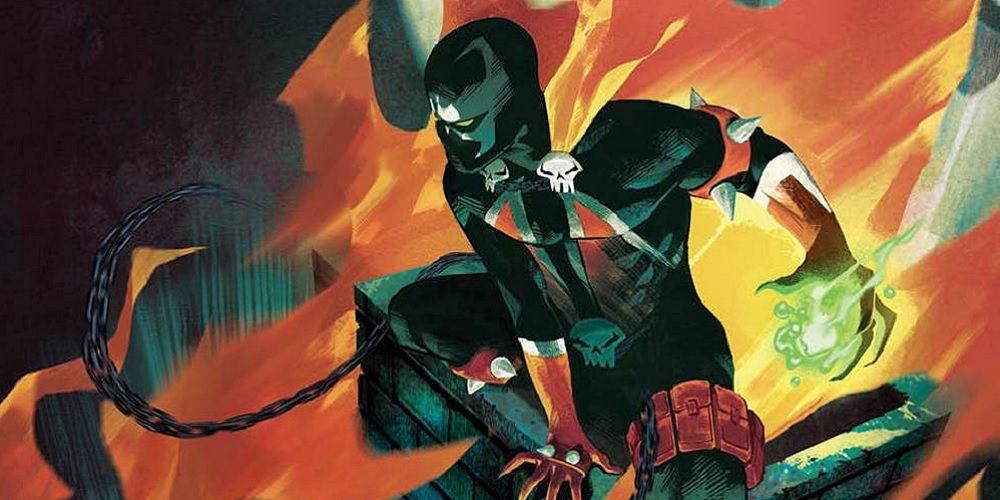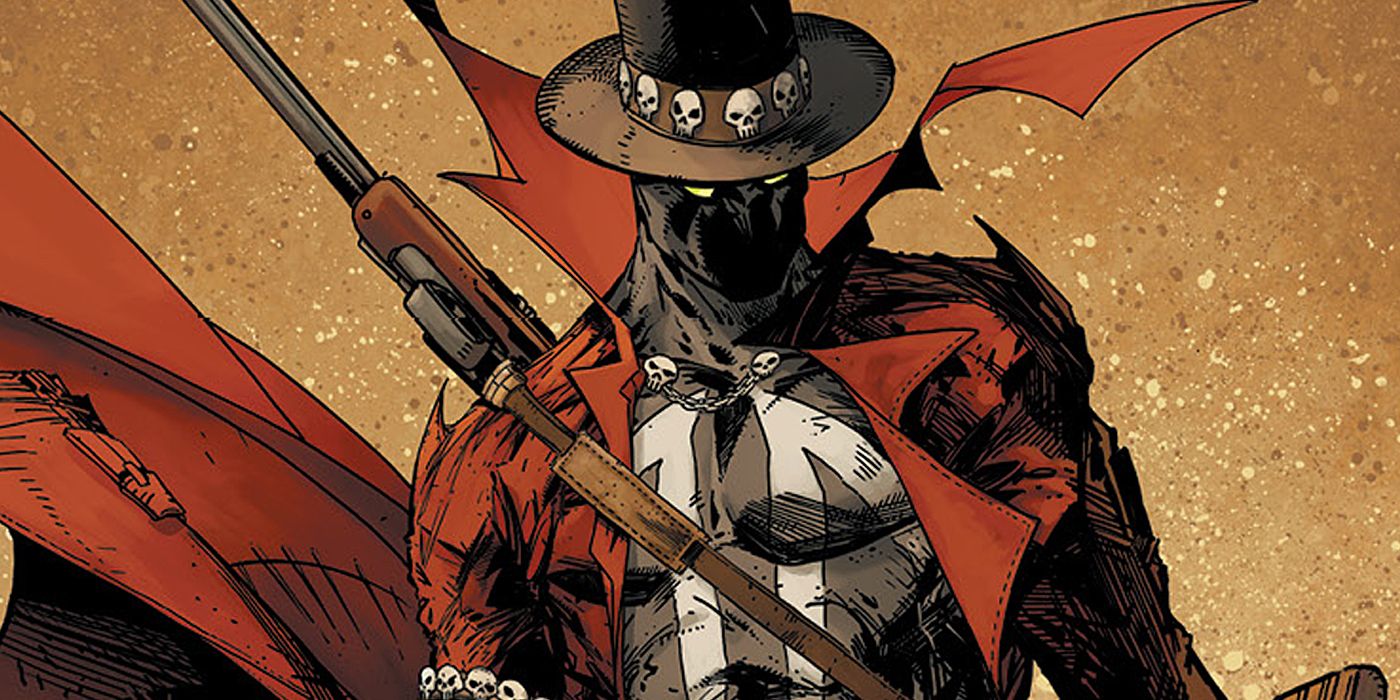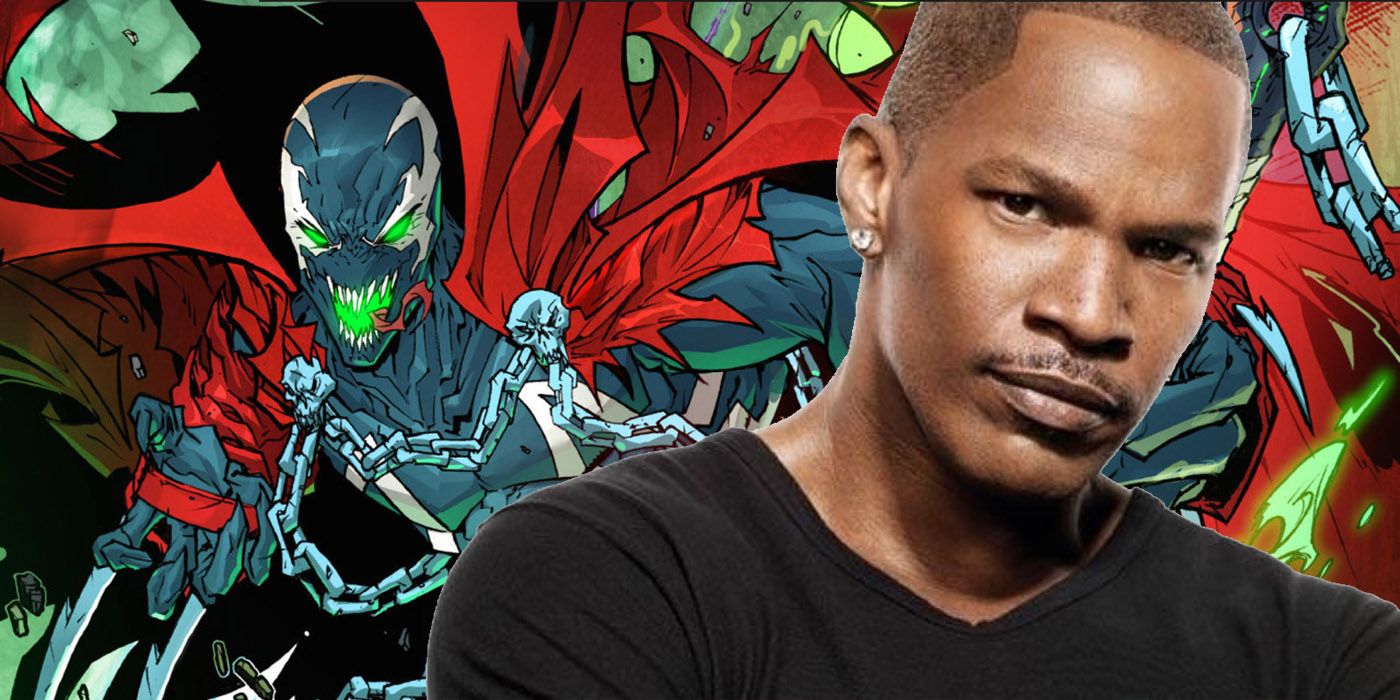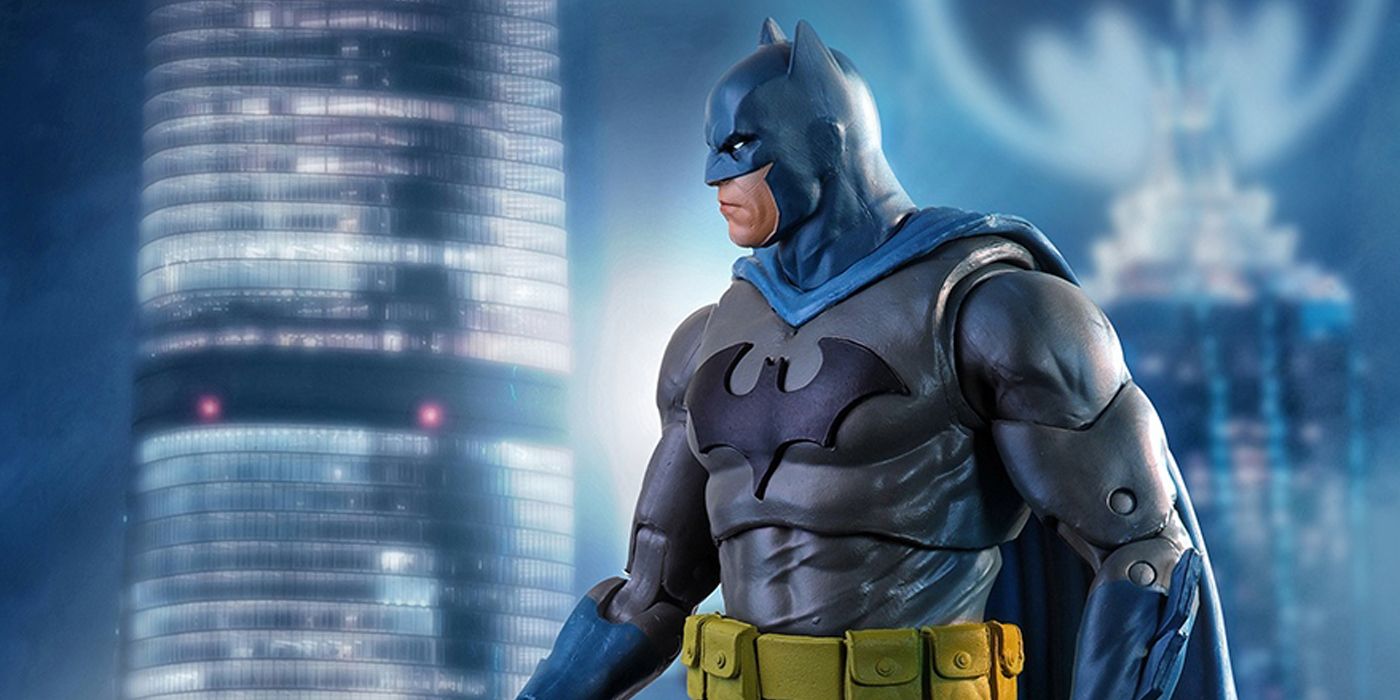Todd McFarlane doesn't need much introduction in the comics circles. As one of the most prolific and celebrated comic book creators in the history of the industry, he has left his mark on countless franchises, and he's one of the founding fathers of the game-changing independent publisher Image Comics. He also launched the revered McFarlane Toys, which changed the landscape of the toy industry. However, the biggest feather in his cap is indisputably Spawn, which holds the Guinness World Record for the longest-running creator-owned superhero comic book series of all time.
CBR caught up with McFarlane to discuss his career and all things Spawn. McFarlane peeled back the curtain to explain why it took 30 years for the Spawn Universe to expand. In addition, he revealed exclusive details about the long-awaited and much-anticipated Spawn movie.
CBR: So, the first thing I want to discuss is the artist spotlight for the Spawn series. What inspired this idea?
Todd McFarlane: Well, a couple of things. One, you need to strive to be relevant every day of your life, and nobody's going to do you any favors. I've learned that over my 40-year career. Every day I wake up and go, "Well, what can I do to help Todd today?" That happens every single day. I'm sure you've been to some of the comic book conventions, and you go down the artist alley, and you go into that comic shop, there are hundreds of brilliant cover artists. There's a wide range of styles, which is what makes it fascinating. Sometimes we do multiple covers, and sometimes one person doing a great cover can get lost pretty quickly because there's a sea of great artwork out there.
So, I [thought], "Hey, if I could hook a couple of big artists like I was able to do on a couple of the Spawn anniversary books, the new Spawn Universe, or even recently on Batman/Spawn -- those are event books -- so, everybody's already looking at it, right? But if you're getting people to do great covers on the regular monthly book, then how can you draw a little bit more attention to it?" And the answer would be, "Well, what if I just put them on all the books, and then the spotlight would be on them for the entire month?" The retailers, the readers, everybody would know what they're getting for one month. If you like that artist, then you may be inclined to buy them all. It was just trying to magnify it from being a lone wolf cover to something a little more. Given that I've only got four monthly books, it's easy for me to say that artist is going to do my entire lineup.
When you are picking an artist, what are you looking for? How can people get your attention? I'm sure there are people out there wondering how they can get Todd McFarlane to notice them and do some Spawn covers.
There are a couple of things. Number one, there's a bit of a beggars and choosers [situation], like, "Do you want to do it?" And B, "Can you do four?" So, that's not one favor; that's four favors I'm asking. Then if you can do four, how fast can you do the four? It leads to a little bit of a logistics equation. Some of the people who were tied up with prior work, we put them into the October, November, [and] December slots, and people who said, "Yeah, I could start on it tomorrow," then we put them in a little bit earlier. There's no preconceived order of I'm going from best to last or any of that. It's more deadline oriented.
And then how I go about choosing it. It's not very scientific, in all honesty. I mean, you walk around, you see stuff, and either you know who the person is or inquire who the person is. I look on Instagram a lot and things like DeviantArt. Sometimes it's fun to find people who are either not quite as known or may actually even be doing art outside the realm of American superhero comic books -- just for a change of pace. And then mix it in with the known quantities that people like and go, "Oh, my God, I've known that guy for 20 years. I'm glad he is doing some cool covers."
I've even had people who've never drawn -- at least on any of my books -- even one image of Spawn before. So, they may have done a hundred Batman covers or hundred Spider-Man covers or whatever, but they've never done that character. So, I think it's always fun to see artists tackle different types of characters since the likes of Batman, Spider-Man, Hulk, and even Iron Man are all dynamically different in their look, shape, silhouette, and what you're trying to accomplish because they all sort of have their own mojo if you will.
Let's pivot to the Spawn: Unwanted Violence series for a second. What inspired you to release it as a two-book miniseries rather than put it under the main Spawn line or in any of your other books?
Well, that came a little later. I was fortunate enough to hook Mike Del Mundo, who did the fabulous artwork in it. I'm biased, but if anybody hasn't seen the book, even if you're not a Spawn fan, at least next time you're in a comic shop, I think you should leaf through it because it's really pretty and elegant. The reason I say that about Mike's artwork is he paints it. It's got a bit of a painter quality to it without it being fully rendered. At times, it feels like a dark R-rated… If you've seen the original Snow White movie, it's animated, but it feels gritty in some of the things. Once I started getting the pages in from Mike and Mike started feeling comfortable with what we were doing, it was noticeably different to me. Since it was noticeably different, I thought that if I put it in the regular book as a four-issue story arc, I might not be honoring the effort that Mike had done.
So, we started talking about the format. Plus, even the story content deserves a little bit of its own corner because it's touching on subjects that people can get somewhat emotional and passionate about. The question was, "Okay, now that I've got four issues from Mike, 80 pages, do we do it as a miniseries of four issues? Do we do it as a one-shot? And we landed on the two issues. And the reason for that was it would give me 40-plus pages, and I could then do a nice cardboard square bound, and it would feel substantial. So, it's essentially the same sort of thing that we did on Batman/Spawn. It just feels like an upgrade from a regular monthly comic book. I thought that Mike's art and the story deserved that.
What are the biggest advantages of doing a miniseries with an established character like Spawn, who has numerous books? Is it about showcasing new artists or the opportunity to tell stories outside the continuity?
I think it's more the second one -- especially when you have a character as old as Spawn. If you're buying a regular book, then you do have momentum going from what the writers and what we're doing editorially over there. We've got this giant boulder moving in a certain direction. And if you do a change-of-pace story, which you can, I think the change-of-pace story should almost be one issue. I remember when I was a kid, the Teen Titans had "a day in the life of the Teen Titans," sitting around the headquarters talking, and you couldn't do that story all the time, but it works very well as a one-off. But given that I knew that this was going to be 80 pages and it was going to take up maybe three or four issues, I wasn't going to be able to stop what we were doing in the regular books for four months without it being a little bit jarring. Miniseries for characters that have already got a lengthy mythology, you can pull them out and drop them into these interesting scenarios, and people will go, "Oh, he must have been doing that on Wednesday when he was doing the other stuff in the regular comic book on Friday." And they'll glue their own continuity together. I used to do it when I read Marvel and DC comic books ad nauseam.
It feels like the Spawn Universe has kicked into another gear in recent years. Why has there been a decision from your side to do more with Spawn now? What has inspired you to go full throttle with Spawn more than ever?
I think your question is a bit misguided. It's not, "Why am I going full throttle and getting aggressive with Spawn?" I think the question should be, "What took you so long, Todd?"
If you look at how long it took, nearly 30 years. Thirty years for me to finally say, "Okay, I'm going to branch out. Well, if you compare that to -- let's take a big example -- Spider-Man. Spider-Man comes out in the early '60s. By the late '60s, he's already got Marvel Tales, which is a reprint book. By [the] mid-'70s, he's got Peter Parker, The Spectacular Spider-Man, then they add the Web of Spider-Man. And then, the book I ended up doing, just the regular Spider-Man. That all happened in about 30 years. Then there was Marvel Team-Up, which was Spider-Man and somebody else…
So, if you look at what other companies have done with their characters, you could argue I was fairly slow in catching up to the rhythm that made sense. But I had been talking about it for a while. I mentioned this when I was going around doing my interviews about when the Spawn Universe was coming up, and it was actually Issue #300 that I finally just said, "Instead of thinking about it, Todd, it's time to do it. And oh, by the way, you now have this big event book -- Issue #300 -- it was going to set this Guinness Record for a creator-owned book." And the story I had, had an easy opening to create the universe, although that wasn't part of it when I first came out with the idea. But then I just went, "Hey, if there's going to be a rip in time and things are going to get sucked in, can't things get sucked out?" It can be a two-way door.
Originally when I came up with the idea of Spawn #300, it was a one-way passage, but I go, "No, it can go both ways." While Clown is getting sucked in this way, why can't things get sucked this way? I remember telling people, "If you looked at Issues #300 and #301 with the covers that Jerome Opeña did that I inked, this was an omen." They would ask, "What does that mean?" I'd go, "I don't know, just wait." If you look at those two covers, you just see all these characters. They look good. Just like a good Avengers book or a good Fantastic Four book, they look good. So I go, "It's time." I laid the groundwork in 2020 so I could pull the trigger in 2021. We were off to the races and will continue to expand and grow from that.
So, for 2023, what other big plans do you have for Spawn that you can share?
The big one that seems like it's finally going to be a reality is the movie. I've always said that everything is going to get driven by what that means. So, the goal right now -- and we're all tracking on it -- is we're working on the next round of drafts on the script. Again, we added the Captain America writer and the Joker writer to this process. We're all hoping to have a script that we could go out to sell by mid-year. Now, let me put a caveat: there's a potential writer strike, maybe actor strike and director strike, that may or may not happen this year, and they're going to all fall in their own biorhythm. So, that may alter how fast or how slow we may have to work around some of these unexpected work stoppages or whatever else.
But short of that, the goal for all of us is to be out there in the middle of the year. Hopefully, to be able to say, "We've sold it, we have the studio, we have the backing, and very quickly, we have a production date that we're aiming toward to begin shooting."
What does this mean to comic book people? It will mean that this thing that has been nebulous and I've been talking about for a long time is now a reality. And that reality means that if a movie comes out and it does good, or even if it doesn't, there's always hype whenever any of these characters get turned into TV or movies. All of a sudden, as a natural progression, there should be more interest in Spawn. "Oh, my God, I wonder what the value of Spawn #4 is going to be worth now? They're going to make a movie. I should start collecting more Spawn."
So, the overall interest of the brand should naturally gain momentum, even if I do nothing. But we've got plans for this year of adding potentially one or two more monthlies, a couple of miniseries, and some one-shots to augment all that. And then we'll just act accordingly. From the moment we say we've made the movie deal, now we're off to the races. And then you can imagine post-movie -- whenever that may be -- that if the movie's a huge success, then all that momentum continues to grow. If it comes out average, it is sort of a flat line. And if it's a dud, then people may just go and move on to something else. Don't have control over all that. But that's what we're contemplating -- just making sure I've got a constant flow of new stuff coming out on the publishing end to help tie into whatever momentum comes on the movie front.
In terms of the last update about the movie, there was mention Jamie Foxx was still attached to the project. Can you still confirm this?
Jamie Foxx... Every message from him is like, "Come on. Come on, man. Let's go." It's always like, "You tell me when. I'm coming. I'm just sitting here waiting for it. Let's go." He may be the most enthusiastic out of all of us. So yeah, he never gave up this horse. He may be more in love with Spawn than I am.
[Laughs]. That's great to hear, especially for fans. It's great to hear Jamie is all in.
We are all at least contemplating it being R rated. When I was saying that I was going to write, produce, and direct it, it was going to be R rated. The people coming on board, especially the writers, they're rowing in that same direction, which is cool. We'll see how excited the studios are about that. But done right, R-rated stuff can go because Joker just paved such a big highway for that. But the bigger piece here is, what do we attach to it? The bigger behind-closed-doors conversation we're having when we sell it is, what are we selling? What I mean by that is, are we selling them a Spawn movie, and then we're out, or are we selling them some of these characters that you and I just talked about in the Spawn Universe to start laying a blueprint for something bigger?
We've gone back and forth. Some of it depends on what the current business models are. There was a pandemic that changed the mindset of the studios a little bit. So we're doing the pros and the cons of both of them. But who knows? Whenever we make an announcement, it could be as simple as we sold this Spawn movie. The other one could be we sold a trilogy plus this, plus this, and we got these characters, so get ready because, in the next five to 10 years, this thing's going to roll out in a big meaningful way. My pitch to Hollywood is just going to be: "Here are my 400, 500 characters [from] over 30 years. Here are my new books. I'm going to be doing it for the next 10 years while you're making a Spawn movie, so this number's just going to get bigger. Do you think any of those characters beyond Spawn have any value?" And if the answer is, "Potentially," then you [have] to start thinking a lot bigger than what you are. If we go back 10 or 12 years, do you think anybody was contemplating that Doctor Strange could have his own movie or that the Eternals could have their movie? Or even to some extent that Iron Man, who at that point was a B character? If you were to say who are the A characters and who are the Bs, I don't know that most people would've put Iron Man in the A, which means that if you get smart, creative people, you can elevate almost any character.
You don't have to say every character I have on this list of 400 [is] equal [to] Spawn any more than anybody has to be the equal of Batman at DC. But can you build other stories with other characters? The answer is, "Of course, you can." So, here's the thing that is both exciting and frustrating at the same time. When I have been dealing with Hollywood in the last couple of decades, especially since the success of superhero movies, they all want their MCU. But sometimes, they don't have the patience, or they don't have the appetite. They talk a mean fight, and they're getting better at it because of the business model. But I remember being at one of the big, top studios saying, "If you're asking me, here's how I would build out a new universe. But it would mean that all your divisions are talking to each other, and you're considering each other to be equal." And right now, that doesn't exist. Your movie people don't give a shit what happens with the success or failure of any of your TV shows, and vice versa. I'm saying that you guys should care because the tide will rise all the boats. Luckily, the streaming companies came along, and they don't have that same sort of fragmented model that the big studios do. They say, "Hey, we're going to bring everybody in under the umbrella, and it's good for us because we really only [have] one outlet." Now the big studios are going, "Hey, maybe we should do a little bit more of that thinking."
Which is good for what I'm contemplating. So, we'll see. Like I said, we're all going to be smarter, in terms of what the reality of what I just said is going to be at some point this year. Before, we [were] just adding people and adding talent. The answer to some of this is going to happen this year. Either we're going to make the deal, or I'm going to get mad, and I'm going to go off and do it on my own. Period. I'm just going to go, "Guys, thanks for wasting my time for years waiting for you. I could have been on movie number four if I had just done it the way I wanted it years ago. Just keep it small, tight, and creepy. But you know what? I was trying to be a good partner. [I've] got lots of good people here trying to push this boulder up the hill." It's been a long process, but sadly I could give you a million stories of development hell in Hollywood. [laughs]. I'm not even unique.
Finally, we have seen the news about the latest McFarlane Toys such as the Dark Knight Trilogy Build-a-Wave collection and other exciting developments. You seem to be doing a million different things. So, the question is, Todd, do you ever sleep? How do you find the energy and drive to do all these things after all these years?
So, Sergio, let me tell you that I live -- and have been living for quite some time -- a life where I'm only as good as the people I employ or hang out with. My job is to be a good scout and a good manager and to assemble the talent that not only, on a good day, is way more creative and smarter than I am but also have whatever skills I lack. That's how you build teams. There was a coach for Chicago Bulls named Phil Jackson, who was there during the Michael Jordan era. Michael won six -- essentially six in a row. And Phil Jackson's got six rings, and Michael Jordan's got six rings. Phil Jackson didn't make one basket in any of those seasons. He was in a three-piece suit during every game with a clipboard. But he was smart enough, and the management there was smart enough to put together and assemble a team built around a couple of big talents, and they let them do their thing. I've said before I think my mom could've coached that team, and she would've had at least three rings because all she had to do was say, "Michael, Scotty, and I don't even know the rest of your guys' names, go do that basketball thing. I'll be sitting over here on the bench with my clipboard. If you [have] any questions, I'll be over here with my clipboard." I think she would've won three, if not more. So, if you get good talent, you get a lot of credit for just being enough to find the talent.
I'm at the point in my life where I get undue credit for some of the things -- a lot of things that we do at my company -- because although I oversee it all and have input in it, if I don't have so many people doing such a great job, then it doesn't matter that I'm overseeing it, right? So, my skill has to be finding talent -- good talent -- every single day. So, yes, I do sleep because I've got a good group of people I've given some of the workload to.
To find out more about Todd McFarlane's various projects, click here.

